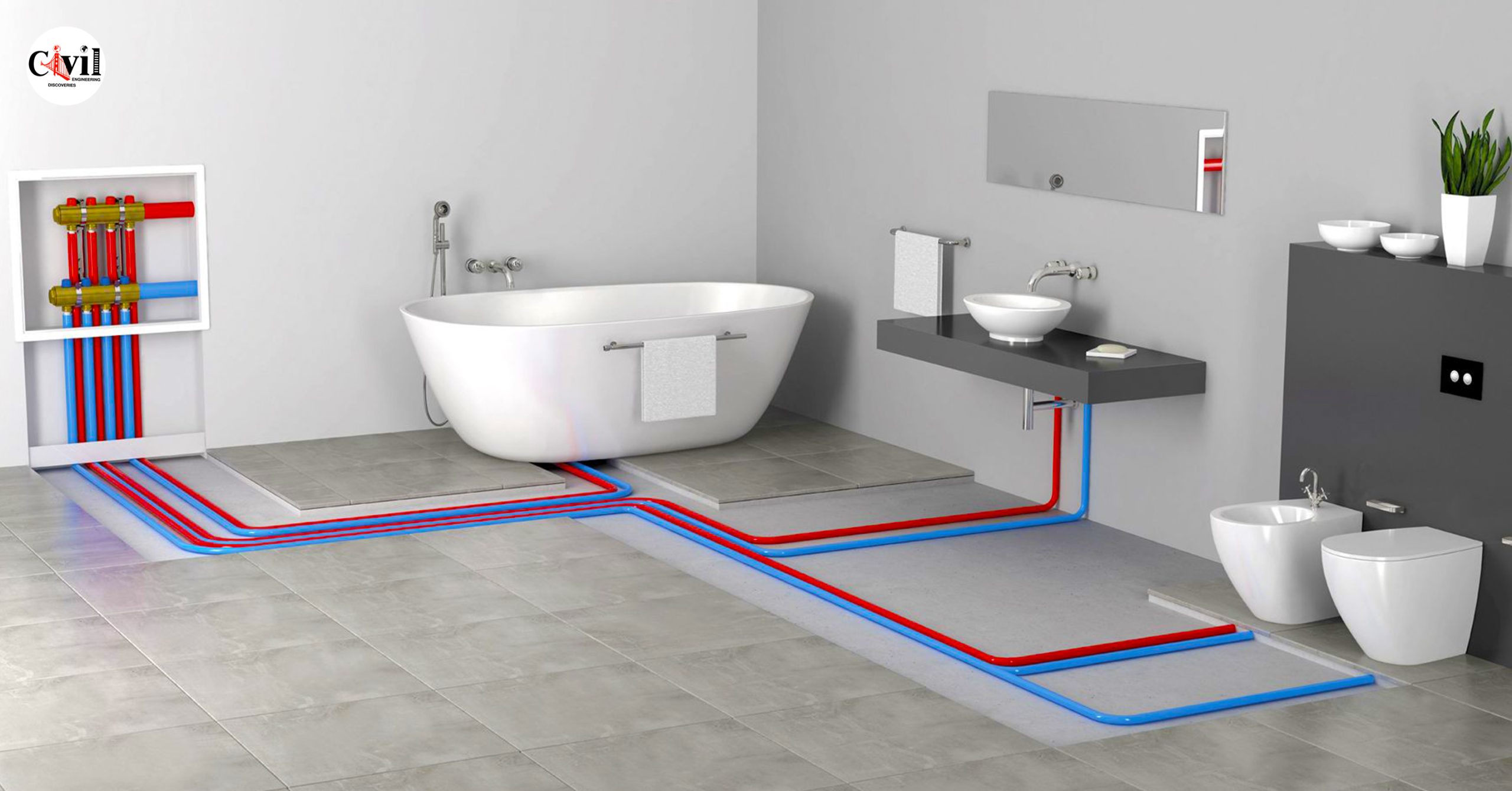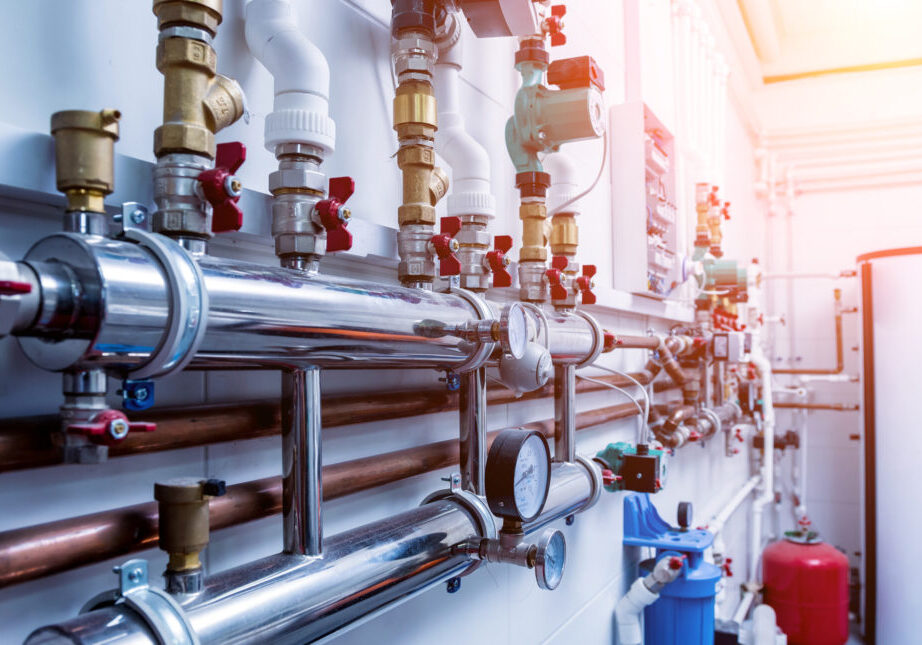A Closer Look at The Layout of Your House's Plumbing System
A Closer Look at The Layout of Your House's Plumbing System
Blog Article
Just how do you really feel in relation to Understanding Your Home's Plumbing Anatomy?

Understanding how your home's pipes system functions is necessary for each property owner. From providing clean water for alcohol consumption, cooking, and bathing to securely eliminating wastewater, a well-maintained pipes system is crucial for your family members's health and convenience. In this extensive overview, we'll discover the complex network that comprises your home's pipes and deal suggestions on upkeep, upgrades, and dealing with usual problems.
Intro
Your home's pipes system is more than just a network of pipes; it's an intricate system that guarantees you have access to clean water and reliable wastewater removal. Recognizing its parts and just how they work together can aid you prevent pricey fixings and make sure every little thing runs smoothly.
Fundamental Elements of a Plumbing System
Pipelines and Tubing
At the heart of your pipes system are the pipelines and tubing that carry water throughout your home. These can be made from numerous materials such as copper, PVC, or PEX, each with its advantages in regards to resilience and cost-effectiveness.
Fixtures: Sinks, Toilets, Showers, and so on.
Components like sinks, commodes, showers, and bathtubs are where water is utilized in your home. Comprehending exactly how these components connect to the plumbing system assists in detecting troubles and preparing upgrades.
Shutoffs and Shut-off Factors
Shutoffs manage the circulation of water in your pipes system. Shut-off valves are critical throughout emergencies or when you need to make repair services, permitting you to separate parts of the system without interfering with water circulation to the entire home.
Water System System
Key Water Line
The major water line attaches your home to the metropolitan water or an exclusive well. It's where water enters your home and is distributed to various components.
Water Meter and Stress Regulator
The water meter measures your water use, while a stress regulator ensures that water moves at a risk-free pressure throughout your home's plumbing system, avoiding damages to pipelines and components.
Cold Water vs. Warm water Lines
Comprehending the distinction in between cold water lines, which supply water directly from the main, and hot water lines, which carry warmed water from the hot water heater, aids in fixing and planning for upgrades.
Drain System
Drain Pipes and Traps
Drain pipes carry wastewater far from sinks, showers, and commodes to the sewage system or septic system. Traps prevent sewer gases from entering your home and additionally catch debris that could create obstructions.
Ventilation Pipelines
Ventilation pipelines enable air into the water drainage system, preventing suction that might slow down drain and create catches to empty. Correct ventilation is crucial for maintaining the stability of your pipes system.
Value of Appropriate Water Drainage
Guaranteeing appropriate water drainage stops back-ups and water damages. Frequently cleaning up drains pipes and keeping catches can prevent expensive repairs and prolong the life of your plumbing system.
Water Furnace
Sorts Of Hot Water Heater
Water heaters can be tankless or conventional tank-style. Tankless heaters warm water as needed, while storage tanks save heated water for prompt use.
Updating Your Plumbing System
Factors for Upgrading
Updating to water-efficient components or changing old pipelines can boost water high quality, lower water expenses, and enhance the value of your home.
Modern Pipes Technologies and Their Benefits
Explore innovations like smart leak detectors, water-saving commodes, and energy-efficient water heaters that can save cash and lower ecological influence.
Cost Considerations and ROI
Compute the in advance costs versus long-lasting savings when taking into consideration plumbing upgrades. Numerous upgrades spend for themselves with minimized energy expenses and less repair services.
Exactly How Water Heaters Link to the Plumbing System
Understanding just how hot water heater link to both the cold water supply and hot water distribution lines aids in detecting problems like insufficient warm water or leakages.
Upkeep Tips for Water Heaters
Routinely flushing your water heater to get rid of sediment, examining the temperature setups, and examining for leakages can extend its life expectancy and improve energy effectiveness.
Common Pipes Issues
Leakages and Their Reasons
Leaks can occur as a result of aging pipelines, loosened fittings, or high water pressure. Dealing with leakages quickly stops water damage and mold development.
Blockages and Obstructions
Clogs in drains and commodes are often caused by flushing non-flushable items or an accumulation of oil and hair. Making use of drainpipe displays and bearing in mind what drops your drains pipes can protect against obstructions.
Indicators of Pipes Troubles to Expect
Low tide stress, sluggish drains, foul odors, or abnormally high water bills are indicators of possible pipes issues that ought to be dealt with promptly.
Pipes Upkeep Tips
Normal Assessments and Checks
Arrange annual plumbing examinations to capture problems early. Seek indicators of leakages, deterioration, or mineral buildup in faucets and showerheads.
DIY Maintenance Tasks
Easy tasks like cleaning faucet aerators, checking for toilet leaks using dye tablet computers, or protecting exposed pipes in cold climates can prevent major plumbing issues.
When to Call a Professional Plumber
Know when a plumbing issue needs expert competence. Trying complicated repair work without correct understanding can cause even more damage and greater repair work prices.
Tips for Lowering Water Usage
Simple habits like taking care of leaks quickly, taking shorter showers, and running complete lots of washing and meals can conserve water and reduced your energy expenses.
Eco-Friendly Pipes Options
Consider lasting pipes products like bamboo for flooring, which is durable and environmentally friendly, or recycled glass for kitchen counters.
Emergency Readiness
Actions to Take Throughout a Pipes Emergency
Know where your shut-off valves lie and exactly how to turn off the water supply in case of a ruptured pipe or significant leakage.
Significance of Having Emergency Situation Get In Touches With Useful
Maintain get in touch with info for local plumbing professionals or emergency situation solutions easily offered for fast action during a plumbing situation.
Environmental Influence and Preservation
Water-Saving Components and Home Appliances
Installing low-flow taps, showerheads, and commodes can substantially reduce water usage without sacrificing performance.
Do It Yourself Emergency Situation Fixes (When Appropriate).
Short-lived repairs like utilizing duct tape to patch a leaking pipeline or putting a bucket under a trickling tap can reduce damage till an expert plumbing professional arrives.
Verdict.
Comprehending the anatomy of your home's pipes system equips you to keep it successfully, conserving money and time on repairs. By adhering to routine upkeep regimens and remaining educated regarding modern-day pipes technologies, you can ensure your plumbing system runs successfully for several years to come.
The Anatomy of Your Home s Plumbing System
Understanding the anatomy of your home s plumbing system is essential for any homeowner. It not only helps in identifying potential issues but also facilitates effective communication with professionals when repairs or upgrades are needed. Your home s plumbing system is more than just pipes and faucets; it s a complex network that ensures the efficient and hygienic flow of water in and out of your house. In this blog, we ll dissect the crucial components of your home s plumbing system. For those in Antelope Valley, Brock Plumbing is your trusted partner for all your plumbing needs, ensuring your system functions smoothly and efficiently.
Water Supply System
Main Water Line: This is where your home s plumbing system begins. The main water line connects your home to the public water supply or a private well. Pipes and Shut-off Valves: Pipes distribute water throughout your home. Shut-off valves are crucial for controlling the flow of water and making repairs without shutting off the entire system. Drainage System
Drain Pipes: These pipes carry waste and water away from sinks, toilets, and showers. Vents: Vents allow sewer gases to escape and help maintain proper pressure in the drainage pipes, ensuring efficient flow of wastewater. Traps: Every fixture has a trap, a U-shaped pipe that holds water and prevents sewer gases from entering your home. The most common is the P-trap under sinks. Fixtures and Appliances
Fixtures and appliances are the most interacted with parts of your plumbing system. They include sinks, toilets, showers, dishwashers, and washing machines. Each fixture and appliance has its own supply and drainage connection, ensuring they receive clean water and can dispose of wastewater effectively.
Water Heating System
Your water heater is a crucial component, providing hot water to various fixtures and appliances in your home. It can be tank-based or tankless, with each type having its own set of advantages and maintenance requirements. Regular maintenance is essential to ensure efficient operation and extend the lifespan of the unit.
Sump Pump
In areas prone to flooding or with high water tables, a sump pump is an essential part of the plumbing system. It s installed in the lowest part of your basement or crawlspace and pumps out water that accumulates, preventing flooding and protecting your home from water damage.
Septic System
Homes that are not connected to a municipal sewer system have a septic system and an underground wastewater treatment structure. Understanding how to maintain your septic system is crucial to prevent backups, odors, and early system failure.
Conclusion
Your home s plumbing system is a complex and essential network, ensuring the efficient and hygienic flow of water in and out of your property. Understanding its key components helps in maintaining it properly and identifying issues before they escalate into major problems. For residents in Antelope Valley, Brock Plumbing is dedicated to providing top-notch services, ensuring that every part of your plumbing system is in perfect working order. Trust our team of professionals to handle all your plumbing needs, ensuring your home remains comfortable, safe, and well-maintained.
https://brockplumbinganddrains.com/blog/the-anatomy-of-your-homes-plumbing-system/

We are very enthusiastic about Plumbing Installation 101: All You Need to Know and I hope you enjoyed our blog posting. For those who enjoyed reading our article if you please consider to share it. Bless you for your time. Come back soon.
Request An Appointment Report this page